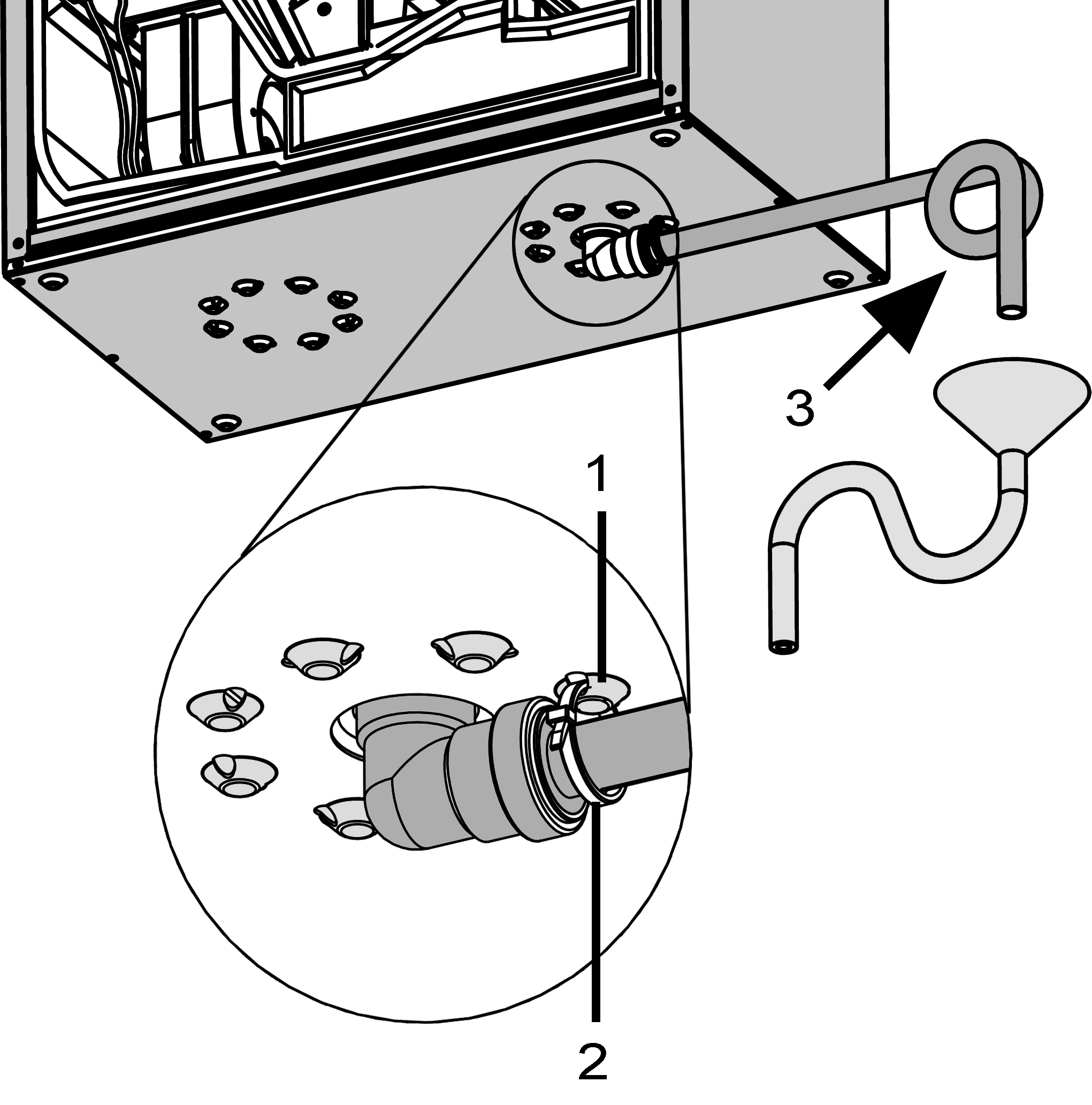Condensate drain
A condensate drain is necessary for ventilation units without an ET enthalpy heat exchanger. No condensate drain is needed in units with an ET enthalpy heat exchanger.
Ventilation units with a condensate drain
- WS 170 L, WS 170 KL, WS 170 KBL
- WS 170 R, WS 170 KR, WS 170 KBR
 Water damage caused by incorrect installations can cause considerable damage to buildings and health due to mould growth (e.g. respiratory diseases in allergy sufferers). The condensate drain may only be installed by sanitary specialists or trained ventilation specialists.
Water damage caused by incorrect installations can cause considerable damage to buildings and health due to mould growth (e.g. respiratory diseases in allergy sufferers). The condensate drain may only be installed by sanitary specialists or trained ventilation specialists.
Installing the condensate drain
 Without a siphon, the ventilation unit will draw in infiltration air through the drain pipe.
Without a siphon, the ventilation unit will draw in infiltration air through the drain pipe.
Be sure to install a siphon. Never install several siphons one after another without a pipe separator.

Fig.: Right-hand version of the ventilation unit (the left-hand version is mirror-inverted)
1 | Condensate drain outlet with sealing plug |
2 | Condensate elbow |
3 | Drain pipe or water hose |
4 | Reducer (d=28mm to d=19mm) |
- Remove the sealing plug from the condensate drain outlet.
- Attach the supplied condensate elbow to the condensate drain outlet at the bottom of the ventilation unit. The condensate elbow has a sleeve with a lip seal and can be rotated 360°.
- Properly connect a Ø 28 mm drain pipe or a ¾" water hose to the condensate elbow. To connect the water hose, use the supplied reducer.

Fig.: Right-hand version of the ventilation unit (the left-hand version is mirror-inverted)
1 | Eyelet |
2 | Cable clip |
3 | Water seal head of at least 50 mm |
- Secure the condensate elbow to prevent it falling out. To do this, attach the supplied cable tie to the condensate elbow and hook the cable tie onto one of the eyes.
- If the humidity level in the installation room is disproportionately high, insulate the drain and condensate drain outlet to avoid condensate.
 Danger to health in the event of incorrect connection due to germ infestation. Mould and germs can cause serious health problems and allergies.
Danger to health in the event of incorrect connection due to germ infestation. Mould and germs can cause serious health problems and allergies. Connection to the waste water system only permitted by sanitation specialists or trained ventilation specialists.
Connection to the waste water system only permitted by sanitation specialists or trained ventilation specialists. Germ build-up possible if siphon is without drip funnel, as there is no decoupling from the wastewater system.
Germ build-up possible if siphon is without drip funnel, as there is no decoupling from the wastewater system.Siphon needs water seal head of at least 50 mm. Install an open drip funnel with another siphon at the drain system side.
- Fit siphon with drip funnel and water seal head of at least 50 mm as shown.
- Fill drain with water, check seal integrity and drainage. Fill the siphon up with water after long dry periods too.
- Fit front cover and secure with the two quick-release clips.